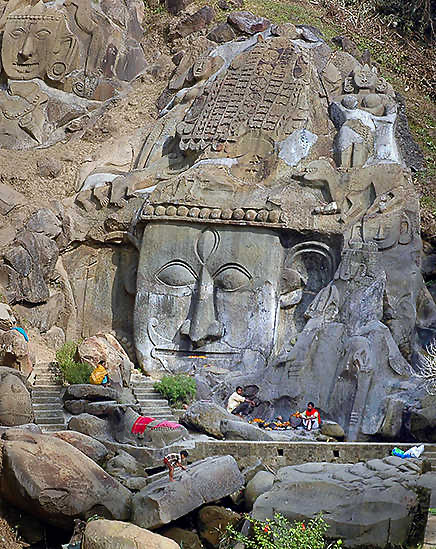Description

Copyright infringement not intended
Context:
Gujarat’s Vadnagar town, the iconic Sun Temple at Modhera, and the rock cut sculptures of Unakoti in Tripura have been added to the tentative list of UNCESO World Heritage Sites.
Details:
- The UNESCO tentative list is an “inventory of those properties which each State Party intends to consider for nomination”.
- With this, India now has 52 sites on UNESCO Tentative List. The list indicates rich cultural and natural wealth of India and shows huge diversity of our heritage
Sun Temple at Modhera
- The Sun Temple at Modhera which is dedicated to the sun god, is the earliest of such temples which set trends in architectural and decorative details, representing the Solanki style at its best.
- The Modhera Sun Temple was made by King Bhima I of the Chalukya dynasty in the early 11th century.
- It is a temple made to honour the Sun God in Modhera village of Mehsana district on the bank of River Pushpavati.
- The temple is designed in such a way that during every equinox, the first ray of the rising sun would fall on a diamond placed on the head of the Sun God. This would also light up the shrine with a golden glow.
- The Sabha Mandap stands on 52 pillars, signifying the 52 weeks in a year. There are carvings of the sun on the walls to show its unity with air, water, earth and space.
- In 2014, Modhera Sun Temple entered the list of UNESCO World Heritage Sites.
- It enjoys the same significance as other two well-known sun-temples in Kashmir (Martand) and Orissa (Konark).
.jpg)
Gujarat’s Vadnagar town
- Vadnagar is a municipality in Mehsana district of Gujarat.
- A multi-layered historic town, Vadnagar has a recorded past stretching back to nearly 8th century BC.
- The town still retains a large number of historic buildings that are primarily religious and residential in nature.
- Gujarat and the Centre are jointly developing the historical and ancient town of Vadnagar as a major tourist hub. The projects cover Vadnagar’s famous Kirti Toran, Sharmishtha lake, Hatkeshwar Temple and archaeological sites.
- The town full is of sites that are related to Hinduism and Buddhism. The famous Chinese traveller Hiuen Tsang visited the place around AD 640 and referred to it as Anandpur.It is also the birthplace of Prime Minister Narendra Modi.
- The Kirti Toran of Vadnagar, an arch from the Solanki period, was chosen as Gujarat's "symbol."
Unakoti in Tripura
- Unakoti is an ancient holy place associated with Shaiva worship.
- The site is a massive gallery set in a forested area displaying a number of towering low-relief images in a unique style, making it a masterpiece of human creative genius.
- Unakoti, famously known as the ‘Angkor Wat of the North-East’, is vying for a UNESCO world heritage tag with both the government and ASI working to preserve the lakhs of Shaivite rock carvings figuresand images of gods and goddesses.
- The structures of the rock-cut sculptures are gigantic and have distinct mongoloid features and display almost the same mystical charm as the spellbinding figures in the Angkor Wat temple of Cambodia. So call it the Angkor Wat of North-East
- Dating back to the 7th-9th centuries, Unakoti is a ‘Shaiba’ (Saivite) pilgrimage site with marvellous rock carvings, murals with their primitive beauty and waterfalls.
- Literally, Unakoti means ‘one less one crore’ in Hindi and Bengali and it is believed that these many rock carvings (ninety-nine lakh ninety-nine thousand nine hundred and ninety-nine) are present here.
- In the local Kokborok language, it is called Subrai Khung and is the central tourist spot of the Unakoti District in the Kailashahar Subdivision of Tripura.
- The place is not just stunningly picturesque but also has great mythological significance.
- According to Hindi mythology, when Lord Shiva was going to Kashialong with one crore gods and goddesses, he made a night halt at this location.
- He asked all his fellow gods and goddesses to wake up before sunrise and proceed for Kashi. It is believed that in the morning, except Shiva, none of them could wake up so he set out for Kashi alone, cursing others to become stone images. As a result of this curse, ninety-nine lakh ninety-nine thousand nine hundred and ninety-nine stone images and carvings continue to be present at Unakoti.
.jpg)
https://epaper.thehindu.com/Home/ShareArticle?OrgId=GH8ALJ1T7.1&imageview=0















